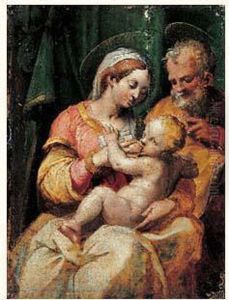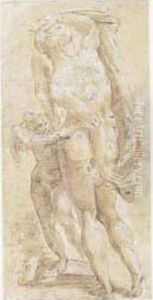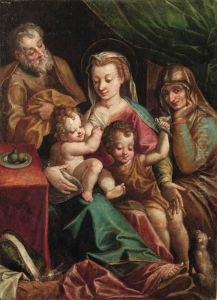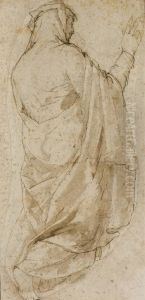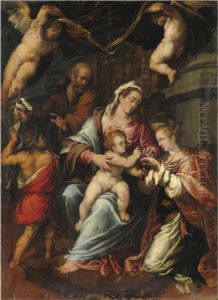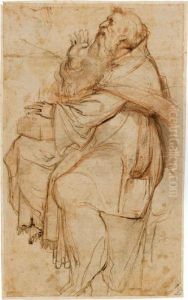Giovanni Francesco Bezzi Paintings
Giovanni Francesco Bezzi, known more commonly as Nosadella due to his association with his birthplace, Bologna, was an Italian painter of the Renaissance period. His works are characterized by their intricate detail, vibrant colors, and the emotional depth of the figures portrayed. Despite the high quality of his paintings, Nosadella remains a somewhat obscure figure in art history, overshadowed by his contemporaries and the giants of the Renaissance period.
Nosadella was believed to have been born in 1524 in Bologna, Italy. Little is known about his early life, including his training. However, it is speculated that he was a pupil of Pellegrino Tibaldi, an influential painter and architect of the time. Nosadella's style suggests a deep understanding of the Mannerist movement, which was gaining prominence during his lifetime. Mannerism is known for its artificial (as opposed to naturalistic) qualities, including elongated proportions and highly stylized poses.
Throughout his career, Nosadella worked primarily in Bologna, contributing to the city's artistic landscape through his religious and mythological paintings. His works are often noted for their dramatic intensity and the vivid portrayal of human emotions. Unfortunately, many of his paintings have been lost or remain unidentified, making a comprehensive assessment of his oeuvre difficult.
Nosadella's contributions to the art world were significant, particularly in the realm of fresco painting. He was known to have worked on several important commissions in Bologna, including work for the Oratory of Santa Cecilia and the Church of San Giacomo Maggiore, among others. His legacy, though not as widely recognized as that of his peers, has been preserved through the works that survive and through the influence he had on the artists of his time and those who followed.
He died in 1589 in Bologna, leaving behind a body of work that continues to inspire interest among art historians and collectors. Nosadella's artistry is a testament to the richness of the Renaissance period in Italy and the intricate web of influences that shaped the era's artistic output. Despite the challenges in fully uncovering his story, Nosadella's contributions to the world of art remain an important part of the historical tapestry of the Renaissance.
